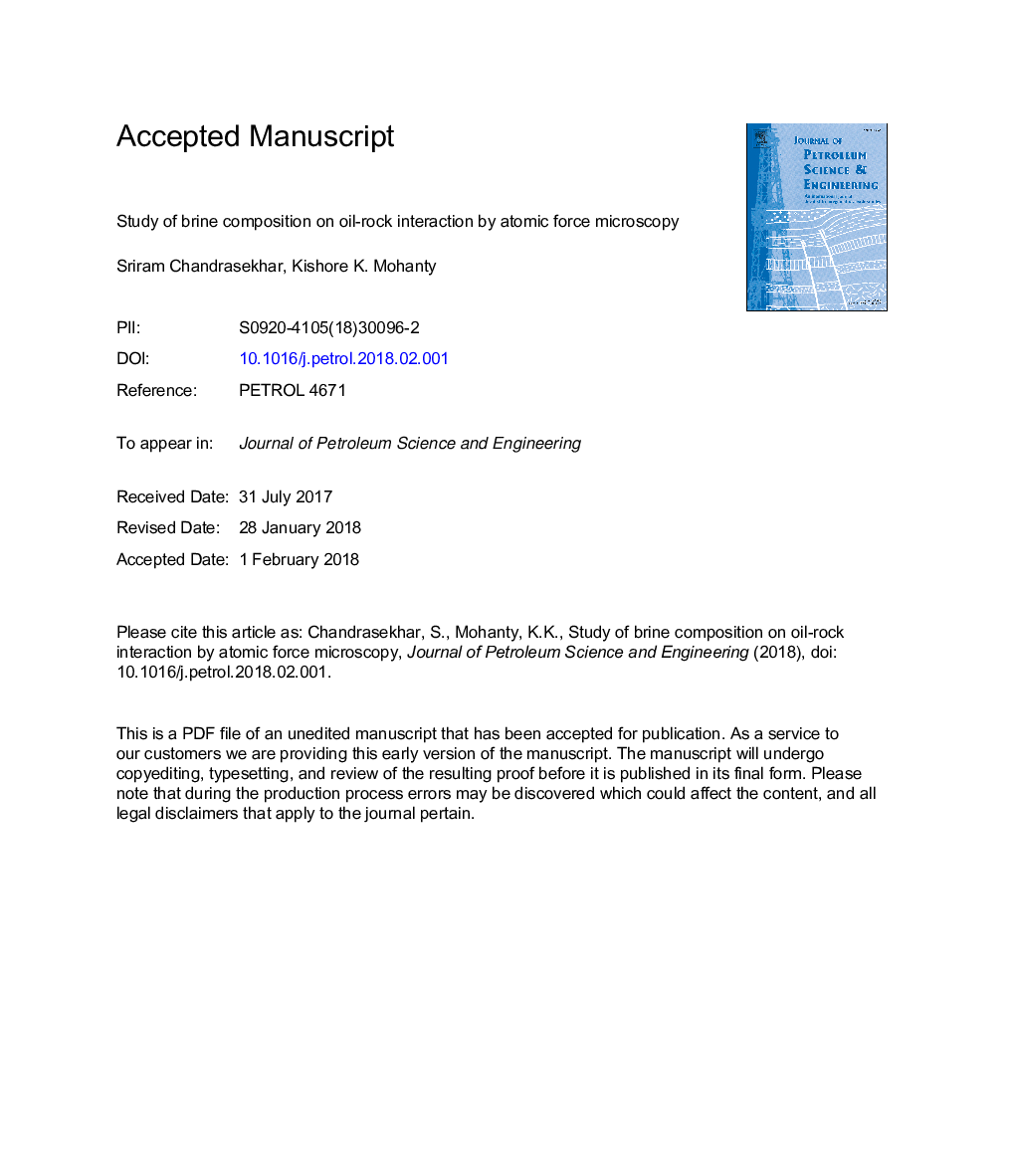| Article ID | Journal | Published Year | Pages | File Type |
|---|---|---|---|---|
| 8125309 | Journal of Petroleum Science and Engineering | 2018 | 33 Pages |
Abstract
Wettability alteration is known to occur in low salinity waterflooding of carbonate rocks. Oil droplets are thought to detach from the rock partially due to changes of the solid surface charge by multi-ion exchange with the brine. These mechanisms have been investigated in the past by measuring zeta potentials of calcite and oil, separately in test brines. In this work, the coupled calcite-brine-oil system was studied by measuring the adhesion force of an organic acid functionalized solid probe with a calcite surface, using an atomic force microscope. Brine compositions were varied in pH and ion concentration, to identify key conditions for minimum oil adhesion to calcite. Our experiments showed the strongest acid-calcite adhesion in formation brine. The adhesion force decreased in decreasing ionic strength NaCl brines, particularly below â¼0.1â¯mol/L where the diffuse double layer expanded greatly. The complex composition brines of ultra-dilute seawater and excess sulfate seawater each gave the lowest adhesion due to a combination of double layer expansion, surface charge change and gypsum passivation of the calcite surface. Modifying seawater's Ca2+ and Mg2+ concentrations showed little change in the adhesion force despite being potential determining ions for calcite. Adhesion force responded the most to pH change. Increasing pH substantially decreased the adhesion force in seawater and excess sulfate seawater until a threshold value of pH 10. Above pH 10, the adhesion increased due to brine instability (to mineral precipitation) and material precipitation onto the calcite surface.
Related Topics
Physical Sciences and Engineering
Earth and Planetary Sciences
Economic Geology
Authors
Sriram Chandrasekhar, Kishore K. Mohanty,
